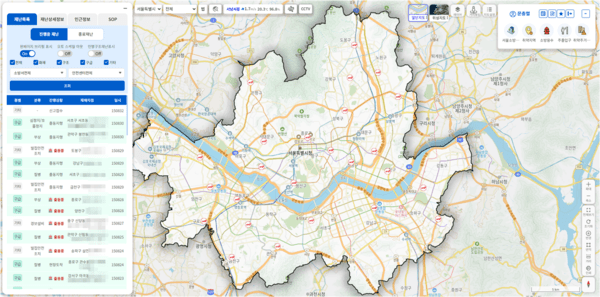The Seoul Metropolitan Fire & Disaster Headquarters held a ceremony on the 17th at their headquarters to officially open the “Seoul-style Next-generation Fire Safety Map System.” This platform is the first in public agencies to fully apply cloud-native technology for disaster response information.
This system was built as part of the “Cloud Native Transition Support Project” promoted by the Ministry of the Interior and Safety and the National Information Society Agency. By converting to a cloud-native based information system, the operating environment was improved, creating a 3A (Anytime, Anywhere, Anything) mobile platform that surpasses spatial constraints. Additionally, information linkage with other systems such as the Disaster Resource Integrated Management System (KRMS) has been strengthened.

The “Fire Safety Map” is a system that provides integrated real-time information necessary for disaster response, such as the availability status of fire trucks, dispatch routes, building information, and weather conditions. It offers map-based critical information to firefighters engaged in on-site activities from the time 119 calls are received until the situation is resolved.
Before dispatch, the system provides details of the disaster location, building conditions, the size of the dispatched unit, and surrounding traffic conditions. During dispatch, it shares information on obstacles, vehicle locations, and danger elements. On-site, the system delivers real-time response information on hazardous substances, firepower deployment, fire hydrant locations, and on-site videos.
The next-generation system includes additional features such as auto-scaling to allocate information resources automatically when the number of users surges, enhanced information security, one-page briefing, integrated situation boards, and mobile support for on-site video.
Utilizing the public-private partnership (PPP) cloud services of the National Computing and Information Agency (Daegu Center), the system ensures 24-hour uninterrupted service. The Seoul Fire & Disaster Headquarters foresees this system becoming a model case for the digital transformation of disaster response nationwide.
Kwone Hyuk-min, Chief of the Seoul Fire & Disaster Headquarters, said, “We have now reached a stage where we can protect citizen safety by utilizing all available information during large-scale disaster situations.” He added, “We will consult with the National Fire Agency so that the Seoul-style system becomes the national standard platform for disaster response.”